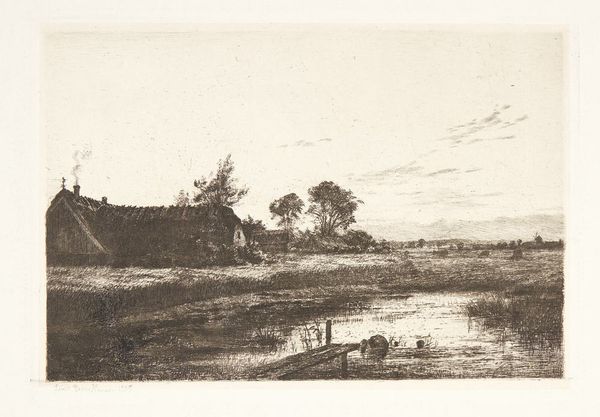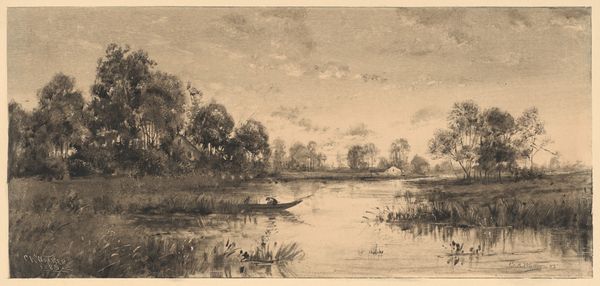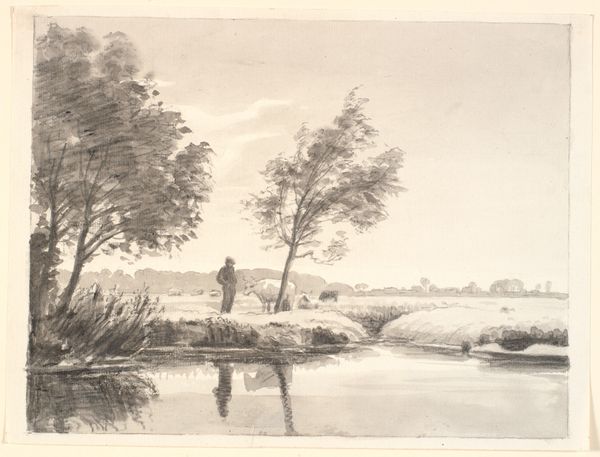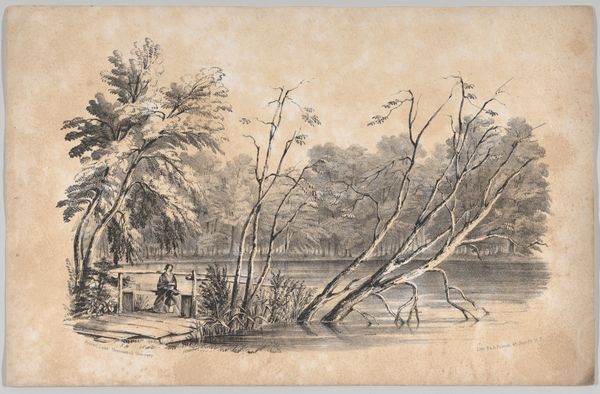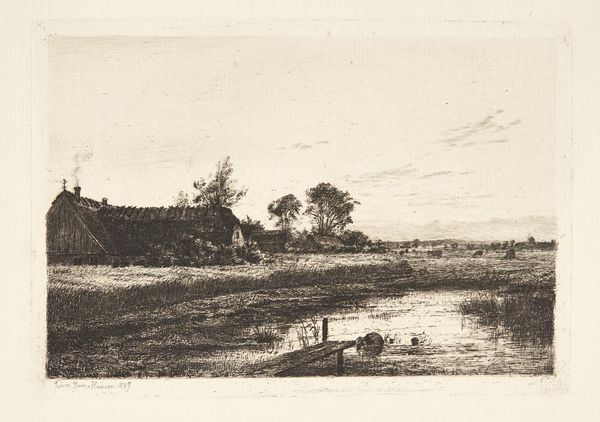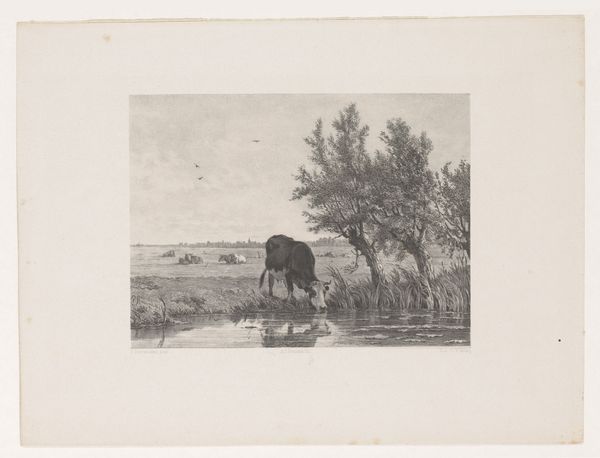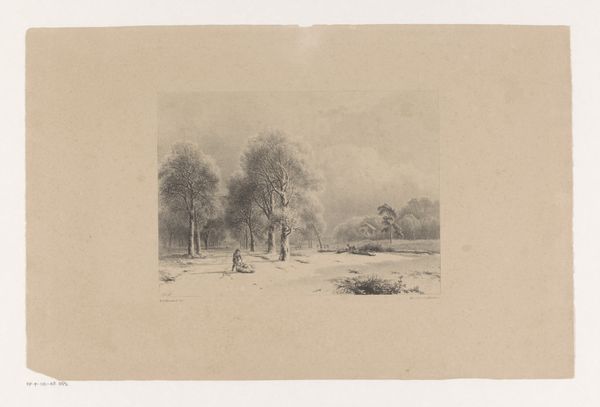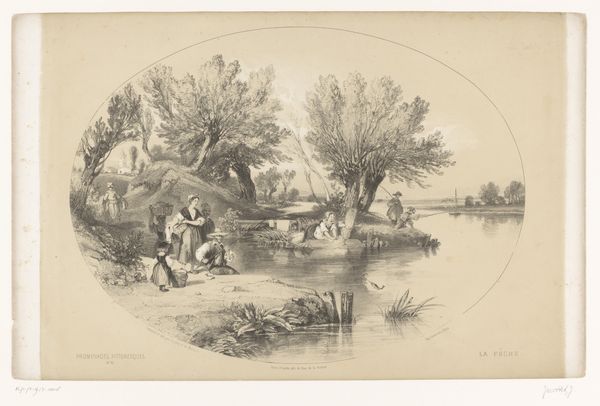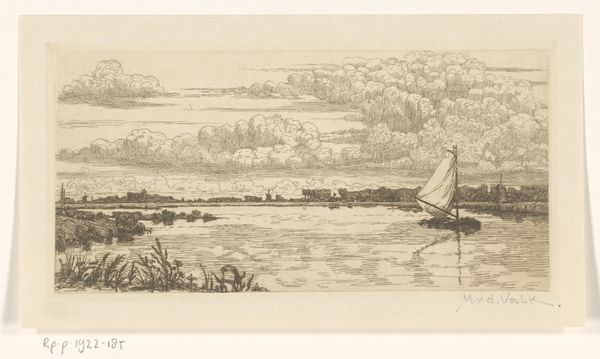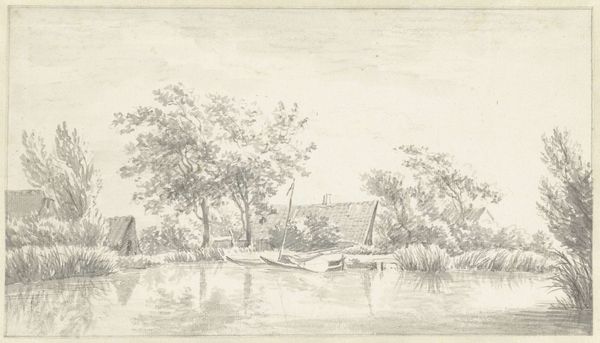
drawing, print, paper, dry-media
#
drawing
# print
#
pencil sketch
#
landscape
#
paper
#
dry-media
#
pencil drawing
Dimensions: Image: 167 x 526 mm Sheet: 345 x 703 mm
Copyright: National Gallery of Art: CC0 1.0
William De La Montagne Cary captured this scene of a Native American camp, likely in the late 19th century, using monochrome drawing. Notice the horses drinking in the river. In this context, they symbolize freedom and the nomadic lifestyle of the Native American tribes, deeply connected to the land and its resources. Horses weren't always part of the Americas; they were reintroduced by the Spanish. Over time, horses became integral to the identity and culture of many Native American tribes, particularly those on the Great Plains. Think of the classical image of the equestrian warrior or ruler. This motif appears throughout history, from Roman emperors to Renaissance princes. In each case, the horse signifies power, control, and nobility. Yet, here, the horse has been reclaimed. It represents a different kind of power, one rooted in harmony with nature and a deep understanding of the landscape. This image stirs something primal within us, a longing for a simpler, more connected existence. The cyclical return to nature, the ebb and flow of life—it’s all there in the image of these horses drinking from the river, a scene that resonates across time and cultures.
Comments
No comments
Be the first to comment and join the conversation on the ultimate creative platform.

